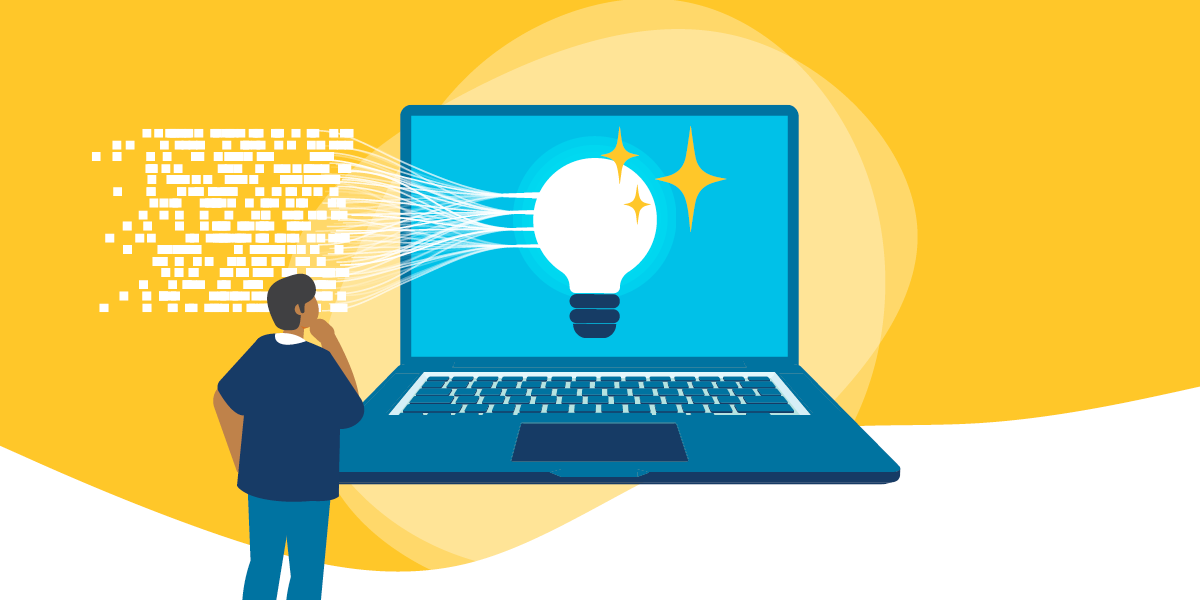A new iteration of the World Wide Web is on the horizon, and the implications may change how we think about donations, fundraising, and the day-to-day logistics of running our nonprofits. Web 3.0, also known as web3, represents not just an innovation in technology but in thinking too.

The Highway to Web 3.0
One way to conceptualize the road to Web 3.0 is to chart a simplified path of the web's innovation from 1991 to the present day.
One-Way: Web 1.0
We can think of the first iteration of the World Wide Web as Web 1.0. This period from roughly 1991 up to 2004 consisted mainly of static web pages geared toward users who were predominantly consumers of content, not producers. It is helpful to think of Web 1.0 as a period of one-way communication to a mostly consumer user base.
Two-Way: Web 2.0
Leading up to 2004, the web began to shift. Consumers gradually became producers too. The current age of two-way communication began with the introduction of social media. No longer were users passive consumers of static web pages.
Social media sites could now connect people from around the globe. Cloud computing exploded, expanding the potential for collaboration and remote work. The web became a platform, with applications created on the internet more so than desktops. These advances bring us to the present day and form the basis of our understanding of the web.
With an explosion of content creation, and insightful data on our usage and habits, a small group of tech giants rose to prominence, centralizing our online experience. While the possibilities for connection have greatly expanded, concerns have risen over the control of users' data, privacy issues, and more.
A Distributed Future: Web 3.0
As we navigate the web in 2022, a common theme percolates through the digital air: distributed. A global pandemic has pushed many workforces out of the office, transforming them into distributed workforces. And the foundation for many of the new ways of thinking around finance, services, data, art, and more is also centered around the same distributed concept.
A distributed future is a decentralized future. This is the key to understanding Web 3.0. Much of how we conceive of the web, finance, and more is structured around a centralized entity. In finance, capital is leveraged through banks. In tech, data is funneled through Big Tech. The idea behind a distributed, decentralized way of thinking is to distribute that authority among users, forming the backbone to one of the central concepts of Web 3.0: the blockchain.
The Blockchain
The Blockchain is the soul of Web 3.0. By this point, many of us are somewhat familiar with cryptocurrencies, NFTs, and other blockchain technologies. The idea behind them is that a distributed digital ledger synchronizes globally across many different computers to create a cryptographically secure log of transactions. By securely confirming transactions on the blockchain, a record has been made, negating the need for any central authority, or middleman, to confirm the transactions, thus decentralizing the process.
The implications for blockchain are vast, with potential use cases seemingly expanding with each new day. For example, advances on the Ethereum blockchain in 2018 opened the door to securing nonfungible digital artifacts, such as artwork or other digital objects. This has given rise to the nonfungible token (NFT). In essence, NFTs use the distributed ledger technology of the blockchain to securely solidify ownership of digital tokens, often in the form of digital art. As with any art or other collectibles, a sale doesn't bestow underlying rights to the work. However, it does allow creators to sell distinct, singular pieces of digital art and collectibles, a phenomenon that previously wasn't possible due to the fungibility of tokens on the blockchain.
While much of Web 3.0 conversation centers around the implications of distributed blockchain technology, there are other hallmarks to consider. Advances in AI and machine learning, including the innovations of the Semantic Web, are opening up possibilities for the future of automation and data insights. The Semantic Web allows for technologies to understand the meaning behind words, an evolution beyond just relying on keywords and numbers.
Additionally, major advances in the use of extensible design and reusable code have allowed developers to expand software's capabilities, giving applications the power to evolve and expand over time without significantly reworking the original source code with each new iteration.
Web 3.0 and Nonprofits
Nonprofits should take note of three key innovations as we crest the horizon of Web 3.0: cryptocurrencies, NFTs, and artificial intelligence.
Decentralized Finance: Cryptocurrencies and Nonprofits
In the world of decentralized finance (DeFi), the cryptocurrency market cap surpassed $2 trillion in 2021, meaning crypto traders have much to celebrate. This also means that 2022 is going to be a boom year for crypto philanthropy. With all the good fortune crypto traders have found, they are looking for ways to donate their newfound wealth.
Tax savings are a major driving force behind crypto donations, but many crypto investors have found it difficult to find organizations that accept their virtual currencies.
The decision to accept cryptocurrency donations is more than just a financial consideration. Crypto donors are generally young millennials who are digital minded. They may not have the same thought processes as traditional donors. Opening the door to cryptocurrencies opens the door to a new generation of forward-thinking young people, expanding the reach and impact of your nonprofit's mission.
However, many nonprofits are not yet equipped to accept crypto donations. There are a few ways to consider accepting crypto donations:
- Accept through an intermediary 501(c)(3) or donor advised fund (DAF), which can grant the crypto out as cash.
- Work with specialized payment processors like Every.org, The Giving Block, and Engiven to directly accept crypto as an investment.
- Check out through a crypto exchange such as BitPay or Coinbase to convert to cash, with some fees and added administrative work.
- Hold crypto in a digital wallet.
Many charities have already begun accepting crypto donations. The American Red Cross and Save the Children accept cryptocurrencies or are using platforms that help them convert crypto to cash. By accepting crypto, these organizations have opened up donations to a diverse new group of supporters.
NFTs and Digital Assets
The explosion of NFTs in recent years has shown us that people are interested in capitalizing on digital scarcity. They want to own unique digital items, nonfungible tokens. When it comes time to consider creative fundraising strategies, consider how your organization might be able to offer NFTs or other scarce digital assets.
Get Smart with Artificial Intelligence
With the prevalence of AI expanding every day, it is hard to imagine a Web 3.0 where artificial intelligence isn't at the heart of many of our everyday operations. It may be time for your organization to consider how AI could help it most efficiently further its mission.
Much of AI's power is in automation. Not every task needs to be done by a person. Through machine learning and training, you can equip AI to automate repetitive tasks, personalize messages, and improve customer service. This frees up space and time for your staff and volunteers to work deeply on critical issues.
AI is key in the realm of data and fundraising. Using insights into your current and potential donor base, you can use machine learning and deep learning algorithms in order to better chart fundraising strategies based on insights you gather from available data online. The possibilities will only expand as we move further into Web 3.0.
A Distributed Future
As is becoming clear, the workplace changes brought about by the pandemic are likely here to stay. The office of the future will be online and globally distributed. At the same time, we can see a distributed future for the web, where our data, currencies, assets, and more are all digitized, decentralized, and mapped by AI algorithms. These innovations expand the scope and power of nonprofits to better serve their beneficiaries and further their mission.
Additional Resources
- Read more about The Current State of Blockchain in Philanthropy.
- Learn How to Accept Cryptocurrency Donations at Your Nonprofit.
- Read about an Otter.ai user's experience with this AI transcription software.
- Get ready for the distributed future with TechSoup Courses' Organizing Your Remote Working Team.
Top photo: Shutterstock








